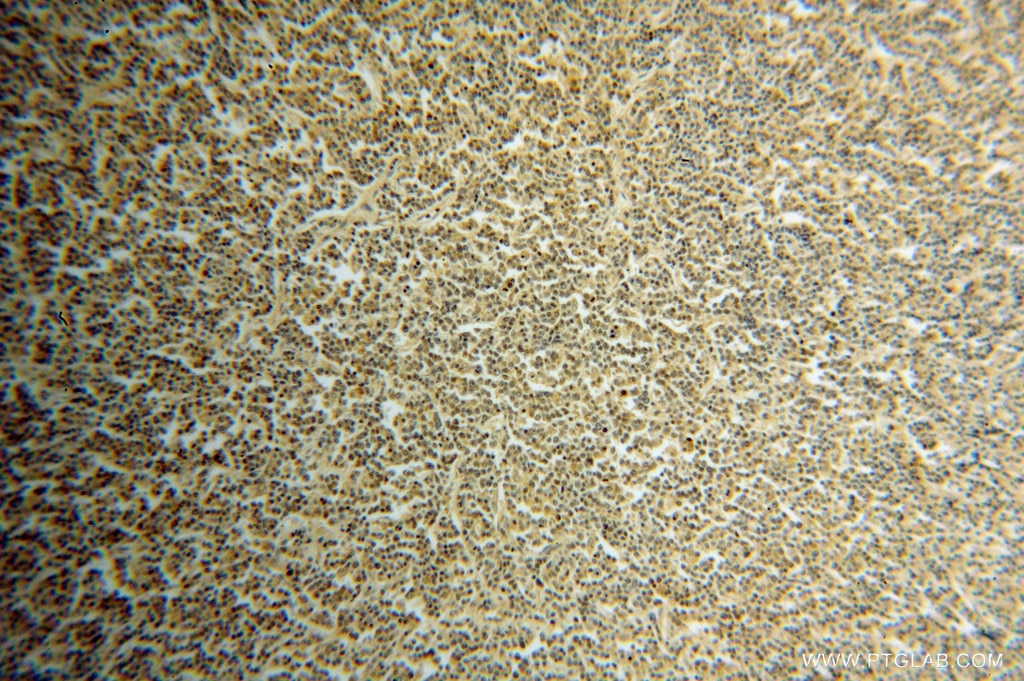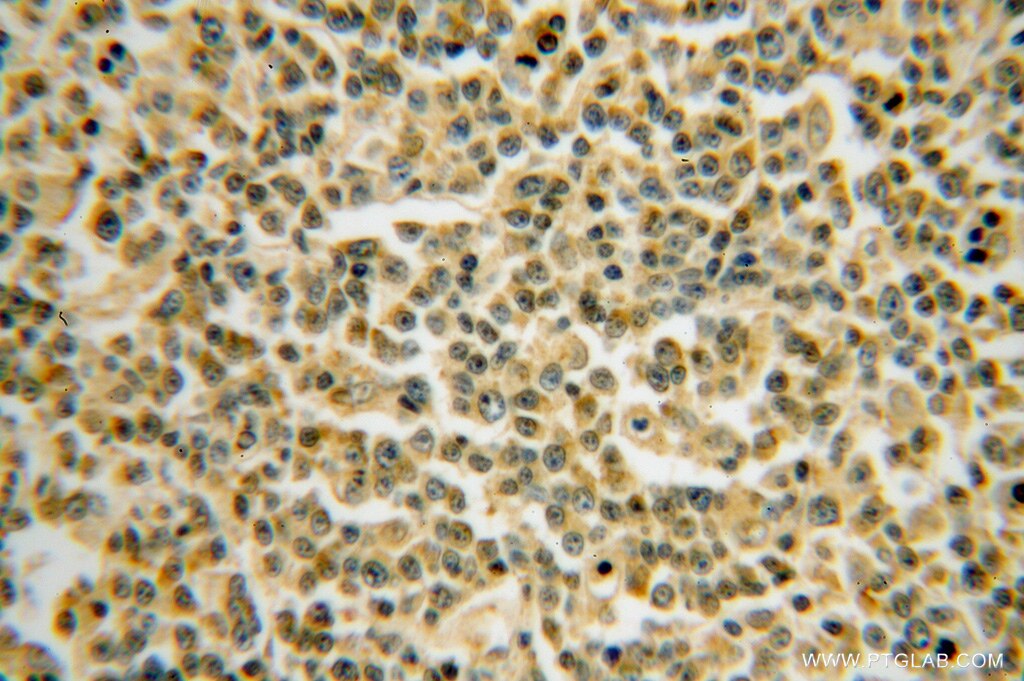Tested Applications
| Positive IHC detected in | human thyroid cancer tissue, human lymphoma tissue Note: suggested antigen retrieval with TE buffer pH 9.0; (*) Alternatively, antigen retrieval may be performed with citrate buffer pH 6.0 |
Recommended dilution
| Application | Dilution |
|---|---|
| Immunohistochemistry (IHC) | IHC : 1:50-1:500 |
| It is recommended that this reagent should be titrated in each testing system to obtain optimal results. | |
| Sample-dependent, Check data in validation data gallery. | |
Published Applications
| WB | See 5 publications below |
| IHC | See 3 publications below |
| IF | See 1 publications below |
Product Information
14879-1-AP targets BTG1 in WB, IHC, IF, ELISA applications and shows reactivity with human, mouse, rat samples.
| Tested Reactivity | human, mouse, rat |
| Cited Reactivity | human, mouse |
| Host / Isotype | Rabbit / IgG |
| Class | Polyclonal |
| Type | Antibody |
| Immunogen |
CatNo: Ag6651 Product name: Recombinant human BTG1 protein Source: e coli.-derived, PGEX-4T Tag: GST Domain: 1-171 aa of BC064953 Sequence: MHPFYTRAATMIGEIAAAVSFISKFLRTKGLTSERQLQTFSQSLQELLAEHYKHHWFPEKPCKGSGYRCIRINHKMDPLIGQAAQRIGLSSQELFRLLPSELTLWVDPYEVSYRIGEDGSICVLYEASPAGGSTQNSTNVQMVDSRISCKEELLLGRTSPSKNYNMMTVSG Predict reactive species |
| Full Name | B-cell translocation gene 1, anti-proliferative |
| Calculated Molecular Weight | 19 kDa |
| GenBank Accession Number | BC064953 |
| Gene Symbol | BTG1 |
| Gene ID (NCBI) | 694 |
| RRID | AB_2067644 |
| Conjugate | Unconjugated |
| Form | Liquid |
| Purification Method | Antigen affinity purification |
| UNIPROT ID | P62324 |
| Storage Buffer | PBS with 0.02% sodium azide and 50% glycerol, pH 7.3. |
| Storage Conditions | Store at -20°C. Stable for one year after shipment. Aliquoting is unnecessary for -20oC storage. 20ul sizes contain 0.1% BSA. |
Background Information
BTG1 is a member of the TOB/BTG family of proteins known to inhibit cell proliferation and negatively regulate the cell cycle (PMID: 25017022). It is strongly expressed in quiescent cells (maximal in the G0/G1 phase) and down-regulated as the cells enter the growth cycle (PMID: 1373383). BTG1 protein is localized in cytoplasm and nucleus, and can interact with CAF1 and PRMT1 (PMID: 1113675, 9712883, 26622543). The aberration of BTG1 expression is associated with B-cell lymphocytic leukemia, and may serve as a diagnostic indicator and prognostic marker of thyroid carcinoma (PMID: 2069907, 25017022).
Protocols
| Product Specific Protocols | |
|---|---|
| IHC protocol for BTG1 antibody 14879-1-AP | Download protocol |
| Standard Protocols | |
|---|---|
| Click here to view our Standard Protocols |
Publications
| Species | Application | Title |
|---|---|---|
Oncotarget BTG1 expression correlates with pathogenesis, aggressive behaviors and prognosis of gastric cancer: a potential target for gene therapy. | ||
Front Oncol BTG1 Overexpression Might Promote Invasion and Metastasis of Colorectal Cancer via Decreasing Adhesion and Inducing Epithelial-Mesenchymal Transition. | ||
Front Oncol Development and validation of a combined hypoxia and ferroptosis prognostic signature for breast cancer | ||
Int J Mol Sci BTG1 expression correlates with the pathogenesis and progression of ovarian carcinomas. | ||
J Cell Physiol Long noncoding RNA DGCR5 suppresses gastric cancer progression by acting as a competing endogenous RNA of PTEN and BTG1. | ||
Mol Med Rep Exosomal microRNA-301a-3p promotes the proliferation and invasion of nasopharyngeal carcinoma cells by targeting BTG1 mRNA |






